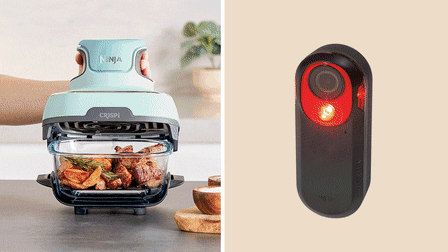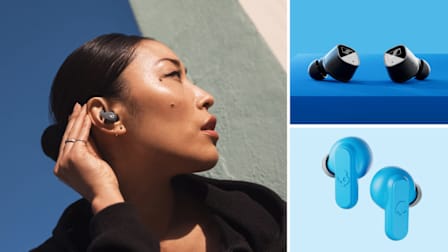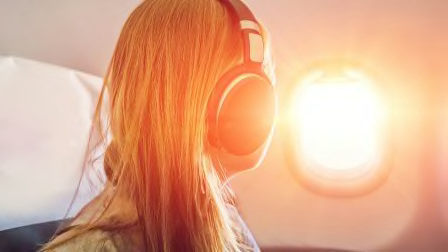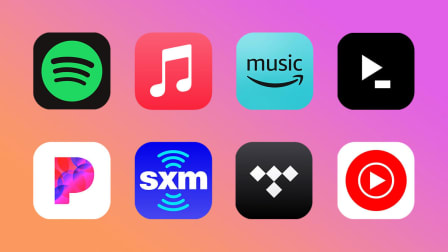Apple AirPods 4 Review: First Entry-Level AirPods With Optional Noise Cancellation
Is the $50 upgrade worth it? Plus, the new AirPods Pro will soon enable a hearing test and hearing aid functionality
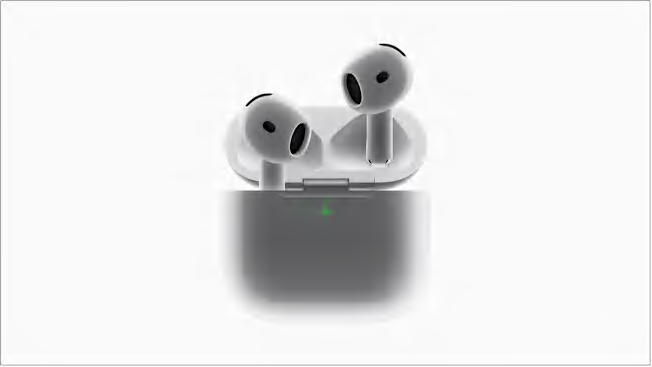
Apple’s new AirPods 4 have improved drivers and electronics for what Apple says is better sound, along with reshaped eartips for a better fit, and, for the first time, consumers have the option to add active noise cancellation (ANC), a feature previously found only in the AirPods Pro and AirPods Max.
The basic model of the AirPods 4 sells for $129 and the noise-canceling version of the AirPods 4 costs $179.
New AirPods With Classic Fit
The original AirPods were, in many ways, a love-it-or-hate-it product.
In the nine years since they were first introduced, two things have happened.
First, the design—which features a hard plastic eartip on a white plastic stem—has become iconic. During the pandemic, it even emerged as a Zoom-call fashion accessory.
However, around the same time, almost all earbuds from Apple and other manufacturers moved away from the one-size-fits-all design. Newer earbuds come with silicone or foam ear tips in a variety of sizes.
Some people, like me, love the secure fit and the passive noise canceling of these models. For other folks, like my wife, the tight-fitting soft eartips remind them of earplugs … in a bad way. These listeners prefer the less-isolating AirPods 4, which retain that hard plastic eartip—no silicone in sight—and form a very gentle seal with your ear canal.
The AirPods 4 have been reshaped slightly with an eye toward better comfort, but I find the difference between the AirPods 4 and a pair of older AirPods I borrowed from my son to be pretty subtle. Do the AirPods 4 ever fall out? For me, they didn’t. Do they feel like they’re going to fall out? That was sometimes a concern for me.
But, as with all earbuds, fit is very much a personal thing. We’ll have much more to say about all this once our diverse panel of testers tries out the AirPods 4 in our sound labs in Yonkers, N.Y.
An Open Design, Now With Noise Canceling
If you like the fit of the AirPods 4, there is an additional benefit. Since the design doesn’t fully plug your ears, you get an appealing sense of openness to the outside environment.
Turn down the Prince playlist on your iPhone and you can have a conversation with a friend without removing your buds. Higher-end earbuds, like the AirPods Pro, achieve this effect electronically with a transparency mode that pipes in sound from an outside mic. The AirPods 4 function more like the Bose Ultra Open earbuds, permitting outside sounds to enter organically, but Apple’s loose-fitting design is more elegant.
That openness is great in circumstances where you want to hear what’s going on around you, whether you’re out walking, running, or chatting with a neighbor who stopped you to ask a quick question. On the down side, if your neighbor is mowing the lawn, you have to put up with the noise, at least if you have entry-level AirPods 4.
That’s what makes the noise-canceling version of AirPods 4 (called, rather anticlimactically, the AirPods 4 with noise canceling) so appealing. And in my quick evaluation of the 4s with ANC, the new feature did its job. Even without the passive noise cancellation, you get from silicone or foam ear tips, the AirPods 4 suppressed the background noise compared to the plain AirPods 4 when I was walking on the streets of New York or riding on a commuter train. However, we’ll leave it to our lab testers to make a final call about the effectiveness of the active noise cancellation on the AirPods 4.
The AirPods 4 with ANC also have a transparency mode that shuts down the noise canceling and electronically combines outside sound with whatever content is playing, although the open design makes that feature a little redundant
Should You Buy the AirPods 4?
Apple claims that both versions of the AirPods 4 serve up better sound quality than previous incarnations, with fuller bass and more extended highs. In my informal trial, they did sound better than a pair of the original AirPods I had in my home, which failed to earn a recommendation from our testers. Our lab testers will compare the 4s to the much better-sounding AirPods 3, which did earn our recommendation.
After a brief trial, the plain AirPods 4 seemed to me like an incremental upgrade over older generations of AirPods. If you liked the classic AirPods, you’ll probably like these.
However, the upgrade to active noise cancellation in the more expensive model adds a potentially useful new feature that could allow them to perform better in noisy situations. How does the active noise canceling of the AirPods 4 compare to other earbuds that have silicone tips to block out the outside world? That’s another question that our lab testers will answer in an updated version of this story.
First Look at AirPods Pro Hearing Test
Apple is planning to introduce a suite of free over-the-air upgrades for the AirPods Pro this fall that will allow users to test their hearing and, if necessary, modify a pair of AirPods Pro to work as an over-the-counter hearing aid. At Apple’s press briefing earlier this week, I got a sneak preview of the hearing test that is promised for the iPhone before year’s end.
I listened for a tone on a pair of AirPods Pro provided by Apple, and when I heard it, touched a large button on an iPhone screen. There was no learning curve at all. This test involved just a few tones that were quite loud and clear. The full test will be longer—at around 5 minutes—and will involve more tones at different volumes and frequencies, but the demo seems quite similar to the gold-standard pure tone audiometry test that’s performed by an audiologist. (As an audio writer, I’ve had my hearing checked regularly.)
Best & Worst Hearing Aid Brands
CR’s survey provides insights on consumer satisfaction with both prescription and over-the-counter hearing aid brands.
If the results from the test show mild to moderate hearing loss, a hearing profile can be applied to your AirPods Pro to turn them into a full-blown over-the-counter hearing aid. By boosting or reducing specific sounds in real time they’re designed to enhance both content and normal conversation. The profile is automatically applied to music, movies, and phone calls across all your other Apple devices, too. (For those with more severe hearing loss, the results of the test can be shared with your doctor to begin a conversation about other hearing aid options.)
The new features will be delivered in software updates to the AirPods Pro and iOS 18 for the iPhone. Although the hearing test and OTC functionality did receive approval from the FDA earlier this month, Apple says, the company didn’t provide a timetable for the full rollout of these features, aside from suggesting that it’s expected later this fall. Our lab testers will report on this functionality when it’s available and we’ll update the story when our testing is complete.





























